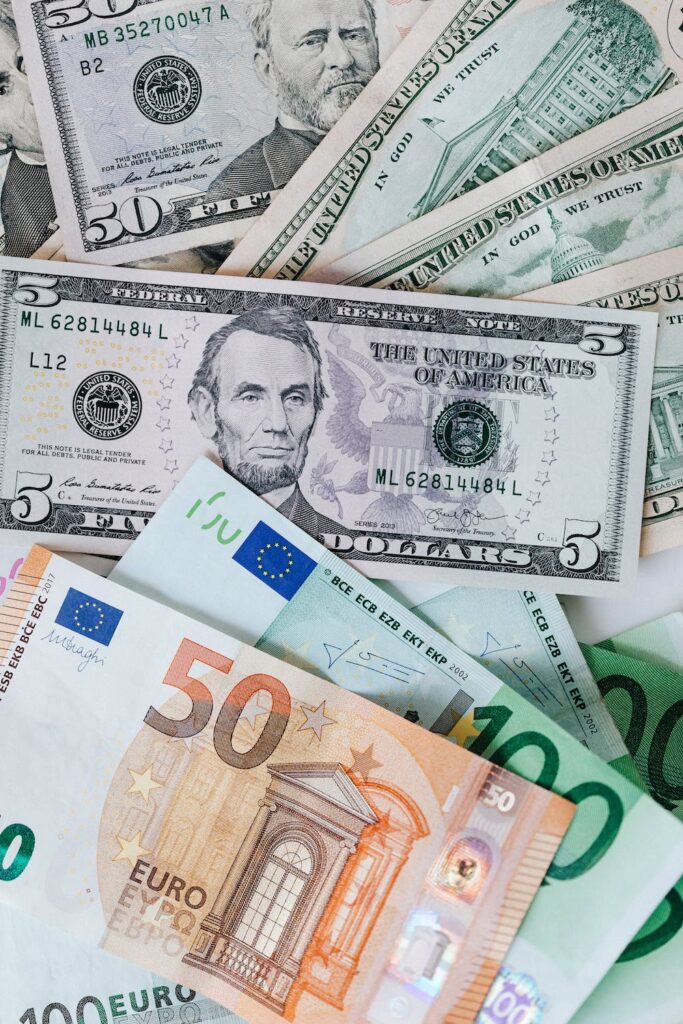
Jeff Sekinger
Jeff Sekinger Founder & CEO, 0 Percent Who is Jeff Sekinger? Visionary Trailblazer Sekinger has been in the financial industry for over a decade. Starting
Forex trading, also known as FX or foreign exchange trading, refers to the process of buying and selling currencies on the global market. In forex, traders aim to make profits by exchanging currencies at agreed-upon prices. This exchange is open 24 hours per day, 5 days per week, and is one of the most popular and widely used markets in the world. One of the reasons why forex is so popular is due to its high liquidity and potential for significant returns.
Just like any other market, forex comes with potential for significant returns but also significant losses. When trading on the forex market, it is important to have a solid understanding of how the market works and which currencies you want to trade. One of the primary concepts as it pertains to forex is currency pairs. Currency pair refers to the value one currency holds against another. For example, the most commonly traded currency pair is EUR/USD, or Euro against the Dollar. You buy a currency pair if you believe that a currency will appreciate in value, and sell when you believe the currency will depreciate.
There are several strategies, including risk management strategies, traders can utilize when trading on the foreign exchange. Two of the most common strategies are carry trading and technical analysis. In more recent times, new strategies have emerged, such as the use of artificial intelligence and algorithmic trading bots. 0 Percent is active in this emerging space and already has trading bots developed for the FX market.

Carry trading is a trading strategy whereby a trader will borrow money in a currency that has a low interest rate and use it to invest in a currency with a high interest rate, earning the interest rate differential profit. Carry trading is a time based technique, and typically sees profits over a longer scope of time. For example, let’s say a trader borrows Japanese Yen, which has a relatively low interest rate, and uses it to buy Canadian Dollars, which has a higher interest rate. The trader would hold on to the Canadian dollar, earning the higher interest rate, but pay the lower interest rate on the borrowed Yen.
As a general rule, carry trading requires significant capital and also carries a significant amount of risk.
A more traditional technique, technical analysis is a strategy that involves studying charts and other market data to identify patterns and trends. This data is extrapolated to predict future price movements. Technical analysis is a time consuming method, though generally holds less risk than many other strategies, as trades are based on data and a good understanding of trends.
A more recent phenomenon, the use of algorithmic trading bots, or algo bots is becoming increasingly widespread. Algorithms powered by artificial intelligence can be programmed with immense amounts of market data and can even be connected to the internet, enabling the algorithm to learn from current events in real time. These bots can trade 24 hours a day and have the potential to earn greater returns than human traders. While it is important not to rely solely on algo bots for all of your investing, algo bots can be a useful tool in an arsenal of investing tools used to generate profits.
Investing, whether on forex or any other exchange, will always carry the potential to incur losses of some magnitude. While that potential can never be fully eliminated, it can certainly be reduced, or even minimized. Two of the most common strategies forex traders use to help reduce their level of risk are diversification and stop-loss orders. Diversification is self explanatory, and involves trading across multiple currencies, as opposed to relying on only one currency pair. Stop-loss orders are a strategy for limiting risk, and involve automatically selling a currency pair before it reaches a certain low price, allowing traders to get out of a trade at a predetermined price or loss amount.
When trading in the Forex market, algorithmic bots known as forex robots or, more generally, algo bots, can be used instead of humans, and this method of trading comes with both pros and cons. A forex robot is a program that uses algorithms to analyze the forex market and make trades on behalf of the user. Forex robots use technical indicators and historical data to determine when to buy and sell currencies.
There are many different forex robots available, and they can be used by traders of all experience levels. Some forex robots are more sophisticated than others and can be customized to fit the specific needs of the user. However, it’s important to note that forex robots are not a guaranteed way to make money in the forex market. Like any other trading method, forex robots carry certain risks and there is no guarantee of success. It’s always a good idea to do your own research and test a forex robot before using it to trade with real money.
Forex trading can be done manually, by analyzing market conditions and placing trades manually, or it can be done using automated trading software, known as a forex robot. Forex robots are essentially algo bots specific to forex, and execute trades on a trader’s behalf. Algo bots are a type of artificial intelligence whose technology is being actively developed and improved on every day.
Algo bots are highly advanced tools used to potentially improve a trader’s returns, though they should be seen as exactly that — a tool. Artificial intelligence is not yet advanced enough to be relied on entirely, and human oversight and even intervention is oftentimes necessary to ensure an overall successful trading outcome. Nevertheless, there are several advantages to using automated trading software when trading on forex.
Algorithmic bots can be faster and more accurate than manual trading. Because bots are programmed to follow a specific set of rules, it is less likely to make mistakes or get emotional, which can affect a trader’s decision-making. These programs are also vastly intelligent and can be trained according to a large set of successful trading strategies.
Automated trading software can also be used to backtest trading strategies, allowing traders to see how their strategy would have performed in the past.
When trading on the forex market it’s important not only to familiarize yourself with trading and risk management techniques, but with common terminology as well. Here is a short list of terms you will hear often in forex trading:
CFDs: CFD, or Contracts for Difference, are a type of financial derivative that allow traders to speculate on the price movement of an asset without actually owning the asset. In forex trading, CFDs can be used to trade currency pairs.
Spot Forex: Spot trades, also known as spot transactions, are a type of forex trade whereby the physical currency is delivered on the spot, or immediately. Forex spot trades are the most common form of spot trading. A spot trade is when the trader buys a currency at the current market price and the trade is settled on the spot.
Spread: The spread is the difference between the bid and ask price of a currency pair. In forex trading, traders buy at the ask price and sell at the bid price. The spread is the broker’s fee for facilitating the trade.
Pip: A pip is the smallest unit of price movement in a currency pair. Usually, a pip is equal to the fourth decimal place of a currency pair, for example 0.0001 for the EUR/USD pair.
Bull Market: A bull market is a market where prices are generally rising.
Bear Market: A bear market is a market where prices are generally declining.
Leverage: This is the use of borrowed funds to increase the potential return on an investment. In forex trading, leverage allows traders to trade larger positions with a smaller amount of capital. While leverage has its upsides, it can also increase the risk of losses.
Beta: Beta is a measure of a stock’s volatility in relation to the overall market. A beta of 1 indicates that a stock’s price will move with the market, while a beta of less than 1 means it is less volatile than the market, and a beta of greater than 1 indicates higher volatility. Beta can be used to measure the volatility of a currency pair.
Blue Chip Stocks: Blue chip stocks are the stocks of well-established companies that hold a long track record of stability and performance. This type of stock is considered to be a safe investment because of its stability, and is oftentimes used as a benchmark for the overall market.
For the beginner, trading can seem overwhelming and the potential pitfalls can be a significant deterrent for many people. This is especially true vis-à-vis the forex market, which is the world’s largest, trading at a ballpark of $5 trillion worth of currency every day. In any case, here is a simplified checklist to help beginners dip their toes in forex trading.
A broker is a financial services company that acts as an intermediary between traders and the market. Brokers provide access to the forex market, as well as tools and resources for traders to use.
Each broker will come with its own set of advantages and disadvantages, and there are many brokers to choose from. Consider factors such as broker’s fees, trading platform, and customer service. It would also be a good idea to read reviews from other traders, to get acquainted with the broker’s handling of client relationships.
Before you start trading, it’s important to have a solid understanding of the basics of forex. Whether you utilize algo bots or go straight manual, knowing the market, trading and risk management strategies, and having a firm understanding of your goals is crucial. It is also imperative to understand all the different currency pairs that are available for trading, as well as market factors and current events that can affect or alter exchange rates. It may even be a good idea for beginners to open a demo account that allows them to practice trading with virtual money, prior to trading with their own capital.
A trading strategy is a plan for how you will approach the forex market. A good trading strategy will include the goals you want to achieve, trading strategies, risk management techniques, and the types of trades you will make.
There are many different trading strategies to choose from. The most popular trading strategy, across all markets, is trend following. This strategy is quite straightforward in its methodology: simply following trends. Trend following is usually a long-term strategy. Breakout trading is another common strategy, which involves attempting to enter the market when a price moves outside of a defined prince range. It’s important to test your trading strategy before you start using it with real money, to ensure that it is effective. Here are some of the most basic and important trading strategy tips:
Know the Market: It’s important to have a good understanding of the forex market and the factors that can affect exchange rates. Take the time to do your research, and stay up to date on current events and breaking news.
Have a Plan: Create a trading strategy that outlines the goals you wish to achieve, the types of trades you will and won’t make, and the risk management techniques you will use. While it is important to stick to your plan over the long term, it is also important to recognize that this plan may change and evolve over time as you become more familiar with the forex market and more comfortable trading currencies.
Practice: As mentioned earlier, you might want to begin by using a demo account to practice trading and test your strategies before you start trading with real capital. This will also offer practice in forecasting where exchange rates may be headed.
Know your Limits: Knowing your limits is half the battle. Without setting clear limits on how much money you are willing to lose, trading becomes significantly more risky to your financial well being and independence. Setting predetermined limits helps stop you from overtrading and making impulsive, oftentimes emotions-based decisions.
Keep your Emotions in Check: Human beings are emotional creatures by nature. Emotions can cloud our judgment and lead to poor trading decisions. Investing is usually better off when based on sound judgment and well-informed decisions.
Explore: Don’t be afraid to try new strategies and explore different currency pairs. This can help you find what works best for you and improve your trading skills, as well as diversify your holdings. However, always make sure to be well informed about any new currency you borrow or any new strategy you begin using. Beginner’s luck is not a factor you should rely on!
Take Expert Advice: While on the topic of making informed movements on the forex market, always seek advice from professional advisors.
Once you’ve gone through the aforementioned process, and feel comfortable and informed enough to begin trading, open a live account with your broker and deposit some funds!

Jeff Sekinger Founder & CEO, 0 Percent Who is Jeff Sekinger? Visionary Trailblazer Sekinger has been in the financial industry for over a decade. Starting

Angel Alvarez Funding, 0 Percent Who is Angel Alvarez? From SpaceX to 0 Percent Angel is a remarkably well rounded individual who has had a

Abhay AnandProduct, 0 Percent Who is Abhay Anand? Title One Test Title Two Test Test
Sign up for our newsletter to stay in the loop.
Sign up to receive news & updates!
Sign up to receive news & updates!